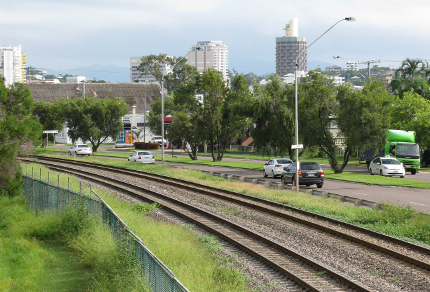There is, I have decided, no one term to describe Railway Estate that immediately paints a clear picture of the Townsville suburb in which Vilis and I lived for our first three weeks in Townsville. I returned to it today and came away with only photographs and a hodgepodge of ideas, which I realized were a reflection of the suburb itself.
Take for instance, the roads, which appear to be a collection of odds and ends of streets, many which simply end rather than connect with a thoroughfare. This makes finding your way about within the suburb an interesting task, as I discovered while cycling this morning. I poked around for an hour and a half, finding quaint, one-vehicle zigzags on a quiet riverside street and stunning views of Mount Stuart beyond the Ross River with nary a house in sight. I eyed the river bank with caution, again spotting a crocodile warning sign, and pedaled alongside the roaring traffic of Railway Avenue. ‘Eclectic’ might be a good word, as though someone picked a handful of diverse features and tossed them out onto the Ross River floodplain south of Townsville’s city centre.
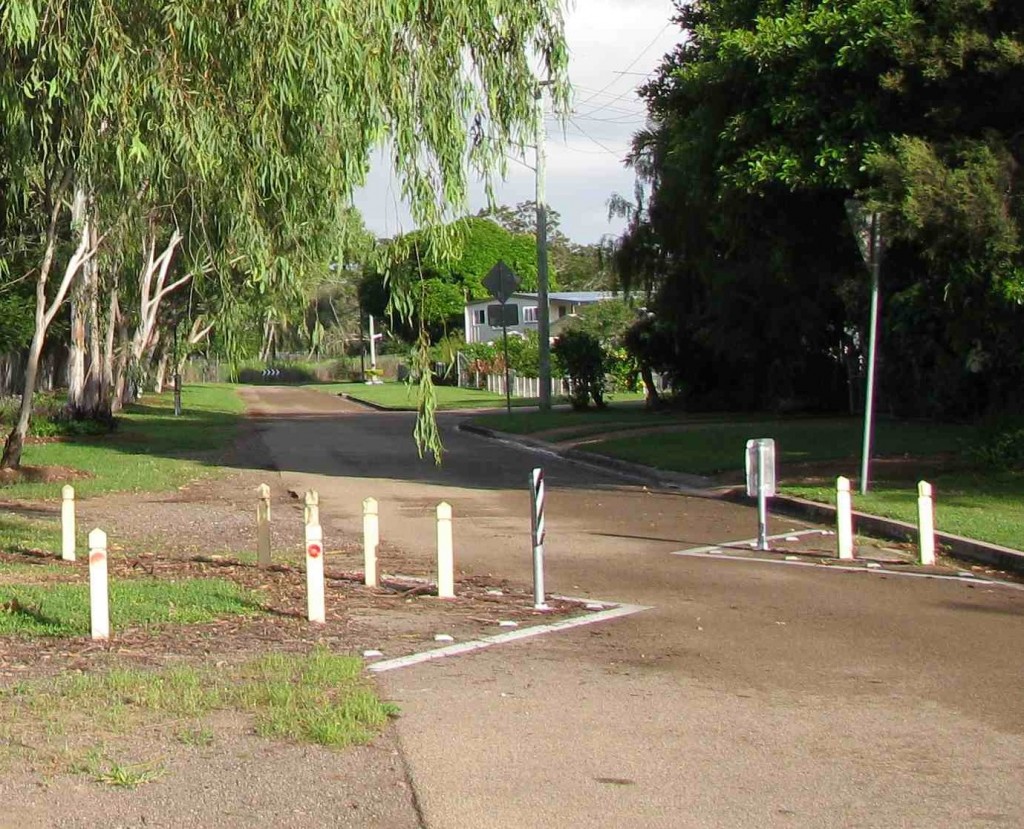
One-lane Squeeze in Railway Estate, Townsville (© Magi Nams)
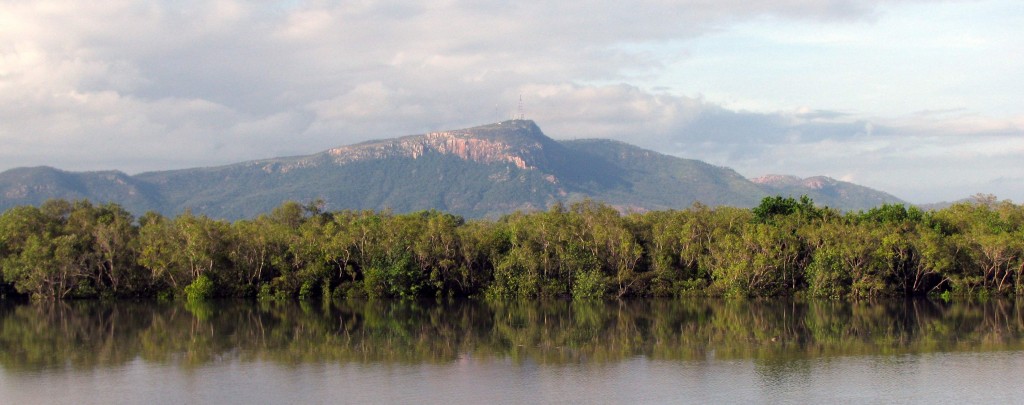
Mount Stuart & Ross River, from Railway Estate (© Magi Nams)

Crocodile Warning (© Magi Nams)
On a map, the suburb is a triangle squashed against a sharp bend in the Ross River and seemingly set apart from the rest of city by major roads – Railway Avenue (although the suburb extends to the west side of Railway Avenue) and Boundary Street. It has no beautifully-groomed parkway, just rough-looking National and Desmond Street Parks and the rare small street that parallels the river. The map shows three boat launch sites and a military barracks and marina closer to the mouth of the river. The houses, many of which are Queenslanders, are definitely not the consistently upscale, new dwellings of the planned communities in Annandale and Idalia, and imbue patches of the suburb with the flavour of a bygone era.
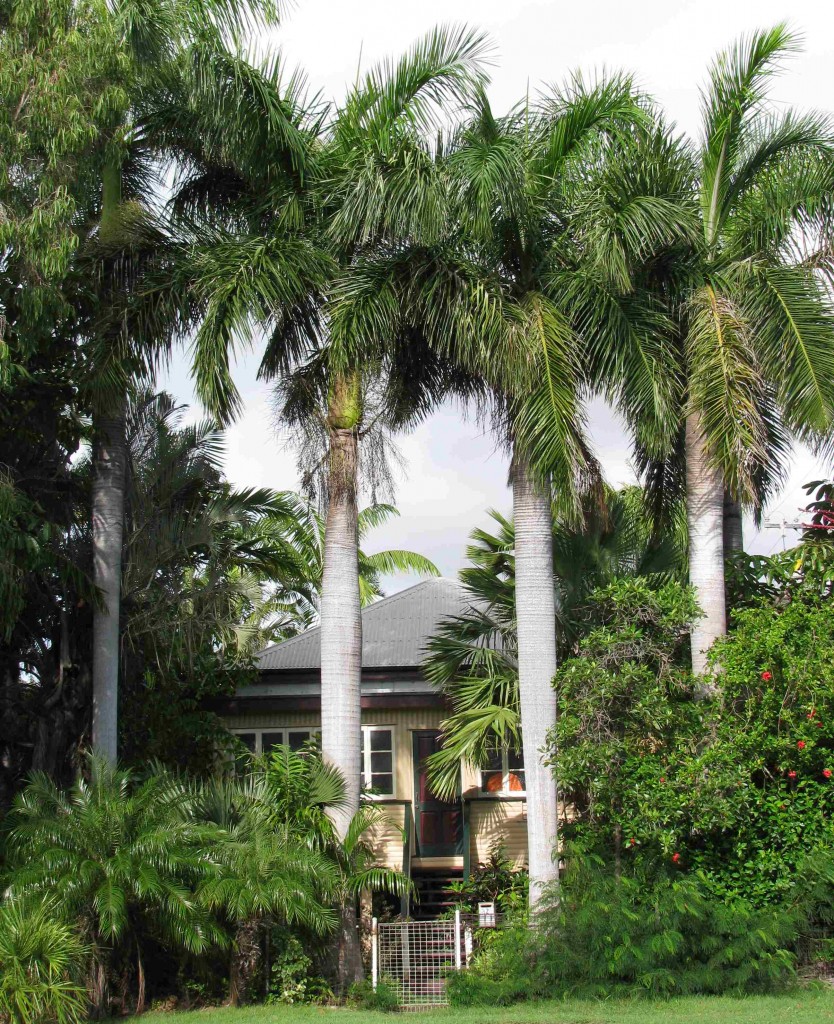
Queenslander in Railway Estate (© Magi Nams)
As alluded to by the suburb’s name, the artery that courses through the western ventricle of Railway Estate is the set of double train tracks running north-south and flanked by broad, often hectic Railway Avenue (this morphs into Abbott Street as it crosses the river).
I crossed the tracks in two different places, first near the Abbott Street bridge, and second, along Railway Avenue, with each of these crossing sites possessing a certain captivating charm starkly different from the other.
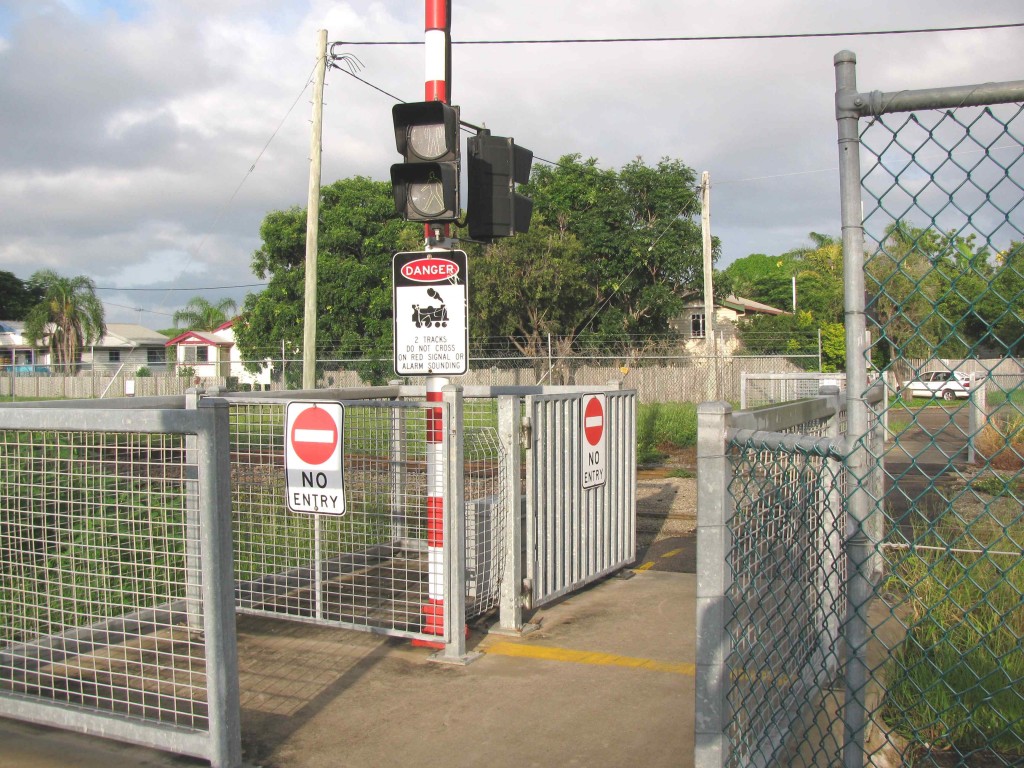
Pedestrian Gate on Railway Tracks (© Magi Nams)
At the first crossing, a set of metal gates and train traffic lights barred or allowed passage across the tracks, depending on whether or not a train was passing.
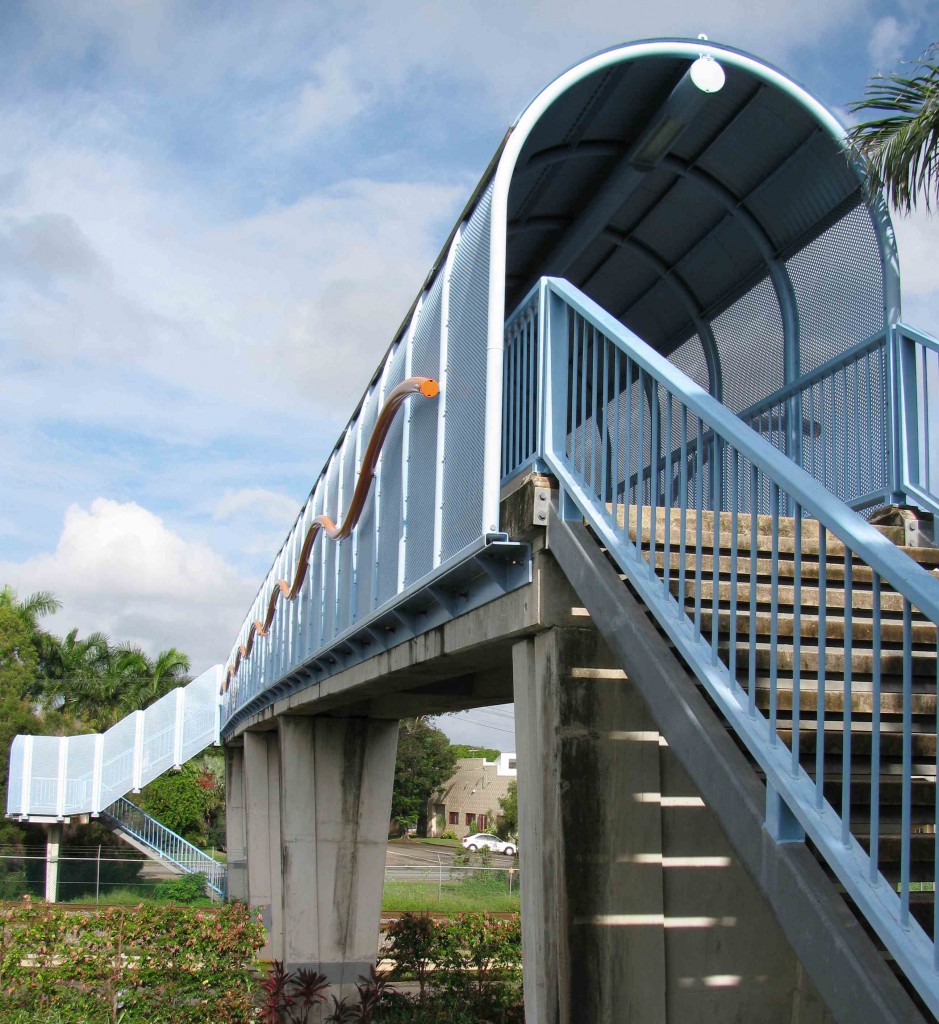
Pedestrian Overpass over Rail Tracks & Railway Avenue (© Magi Nams)
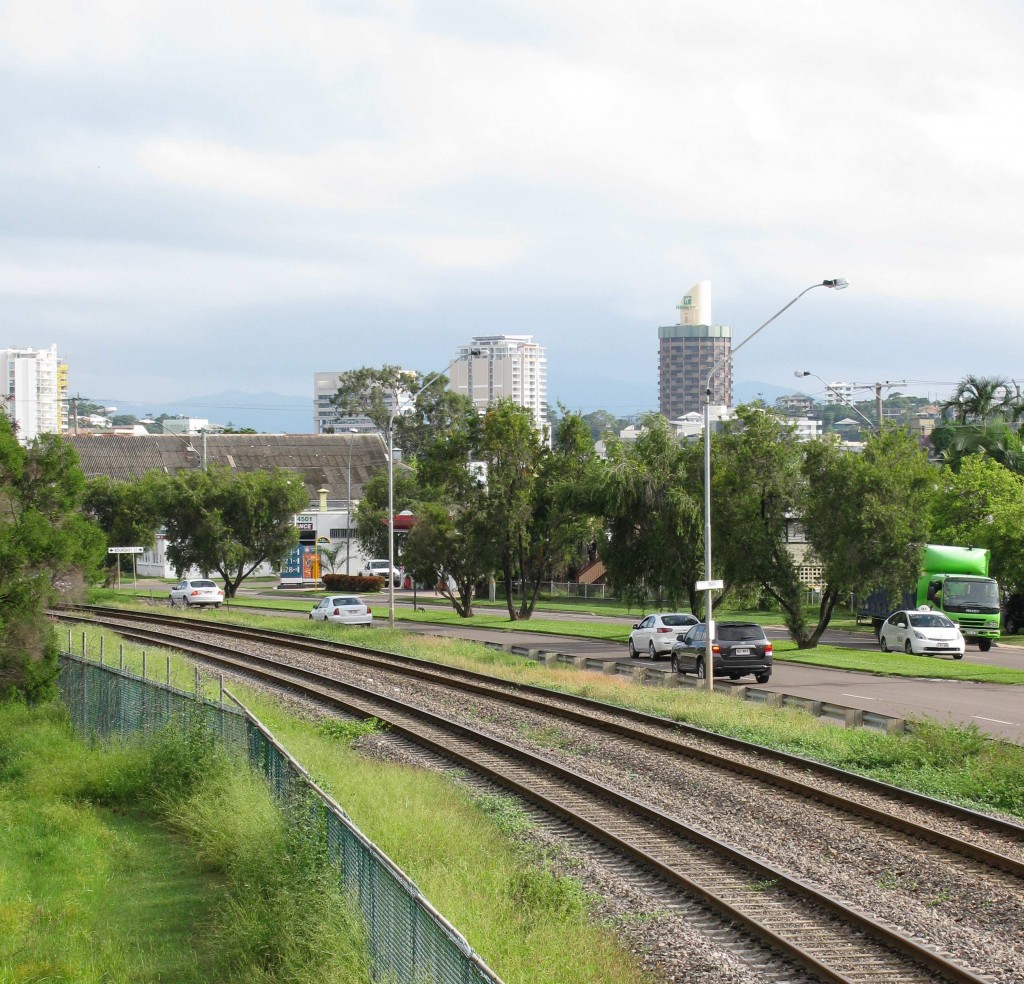
View North to City Centre from Rail Overpass (© Magi Nams)
At the second, a bright blue, tubular overpass accessed by stairs at each end granted safe passage high above the tracks and four-lane road. Schoolboys wearing uniforms of royal blue shorts and orange polo shirts used the overpass on their way to Railway Estate State School adjacent to the east end of the blue tube. Beyond the tube, I saw again the bat tree by the church where feeding flying foxes had screeched like tormented mixtures of cats and seagulls.

